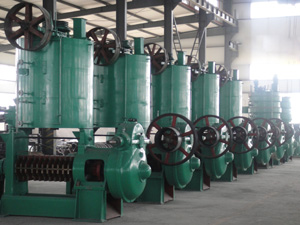
Peanut oil is a staple in kitchens worldwide, valued for its rich flavor and numerous health benefits. Understanding the intricate processes of hot - pressed and cold - pressed peanut oil production can significantly impact your purchasing decisions as a global buyer. Let's delve into the details of this fascinating process!
The journey of peanut oil starts with the shelling of peanuts. Our advanced shelling machines ensure efficient removal of the outer shells, with a high shelling rate of over 95%. This process not only cleans the peanuts but also prepares them for the subsequent steps, laying a solid foundation for high - quality oil production.
There are two main methods of extracting peanut oil: hot - pressing and cold - pressing. Hot - pressing involves heating the peanuts to a high temperature, usually between 120 - 180°C. This process can increase the oil yield, typically achieving an oil extraction rate of around 40 - 45%. The hot - pressed peanut oil has a stronger, more intense flavor, which is highly sought after in many cuisines.
On the other hand, cold - pressing is carried out at lower temperatures, generally below 60°C. Although the oil yield is lower, around 35 - 40%, cold - pressed peanut oil retains more nutrients and has a lighter, more natural flavor. This makes it a preferred choice for health - conscious consumers and those who value the pure taste of the oil.
After shelling, the peanuts undergo a thorough cleaning process. They are washed to remove dirt, dust, and other impurities. Our cleaning system can remove up to 98% of non - peanut materials, ensuring the purity of the final product. Subsequently, the peanuts may be dried to an optimal moisture content, typically around 8 - 10%, to facilitate the pressing process.
In the case of hot - pressing, roasting is a critical step. The roasting temperature significantly affects the flavor, color, and oil yield of the peanut oil. At our production facilities, we precisely control the roasting temperature within a narrow range to achieve the best results. Properly roasted peanuts can lead to a 5 - 10% increase in oil output compared to those with improper roasting.
Following roasting or pre - treatment, the peanuts are crushed. This step breaks down the peanuts into smaller particles, increasing the surface area available for oil extraction. Our state - of - the - art crushing equipment can finely crush the peanuts, ensuring that the oil cells are effectively broken, thereby enhancing the overall oil extraction efficiency.
The crushed peanuts are then sent to the oil press. Our large - scale screw oil presses are designed for high - efficiency extraction. Depending on the pressing method and peanut quality, the oil output rate can range from 35% to 45%. These modern machines are also equipped with advanced filtration systems to ensure the initial purity of the extracted oil.

After oil extraction, the remaining oil cakes are not wasted. These oil cakes are rich in protein and can be used as high - quality animal feed or as a raw material for the production of bio - fertilizers. This not only reduces waste but also adds value to our production process.
The extracted crude oil then undergoes a refining process to remove impurities, odors, and excess pigments. The refined oil meets international quality standards, ensuring its safety and stability. Finally, the refined peanut oil is filled into bottles or containers in a clean and automated filling workshop, ready for distribution.

Our company takes pride in its rigorous and meticulous production process. We adhere to the highest quality control standards at every stage, from peanut shelling to oil filling. As a global buyer, you can rest assured that our peanut oil products are of the finest quality.
Are you ready to partner with us for high - quality peanut oil? Contact us today to start your procurement journey and experience the excellence of our products firsthand!

